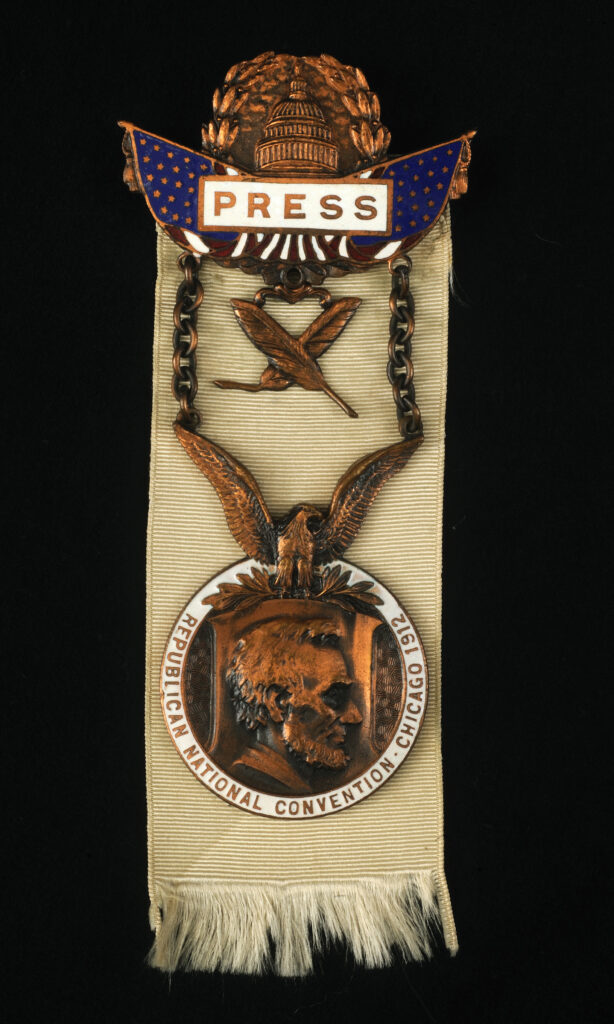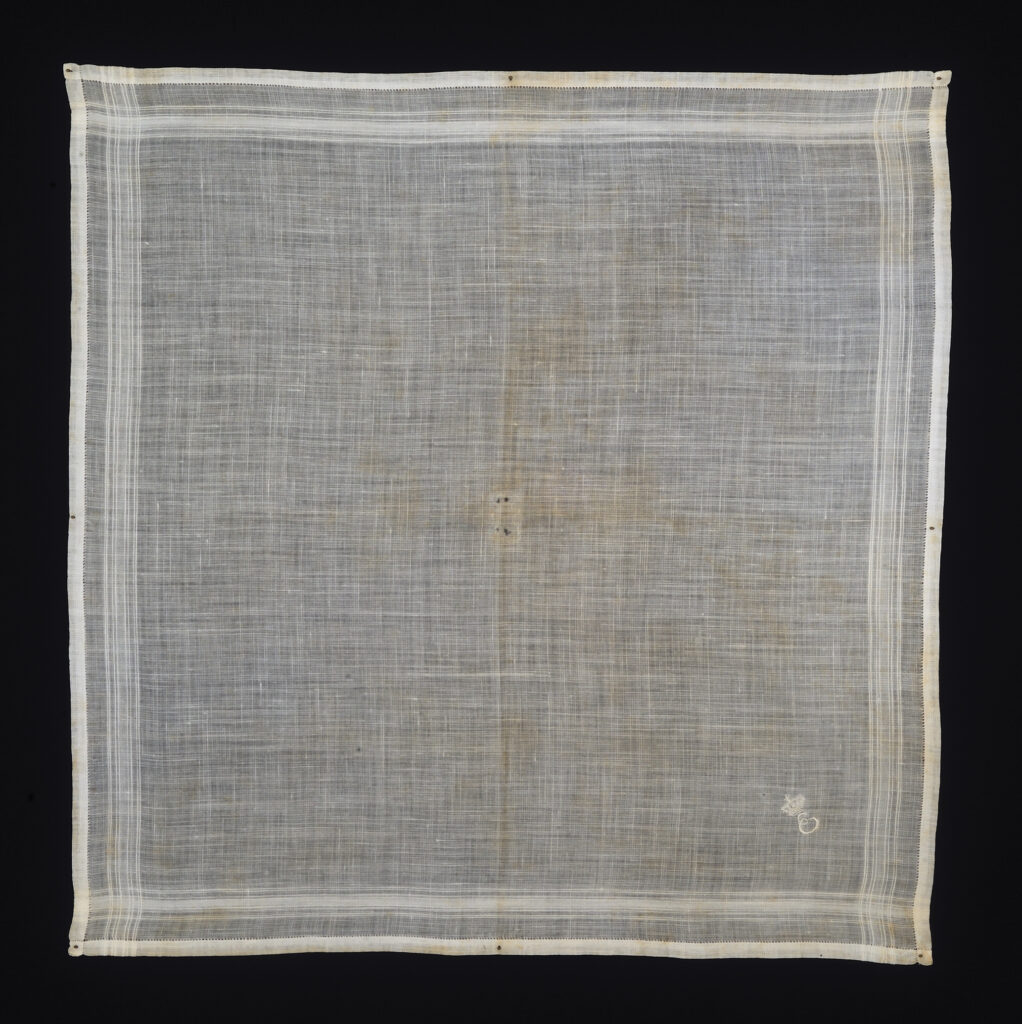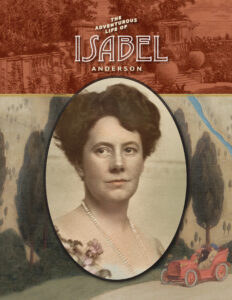
Philanthropist. War nurse. Political commentator. World traveler. Patriot. Author. Arts patron. Isabel Anderson filled her life—spanning the centennial of the American Revolution and World War II—with pursuits that both fulfilled and challenged the expectations for a woman of her generation. She valued history and tradition, but refused to follow what she considered outdated customs. She embraced the duties of a society wife and hostess, but sought more meaningful work outside the home. And while she maintained that women’s suffrage was not necessary, she supported other Progressive causes, including public health and prison reform.
Isabel Anderson’s story and personality have remained hidden behind the glamour of her roles as a wealthy heiress and society wife. She was an important philanthropist, giving to churches, hospitals, universities, and museums. She was active in humanitarian causes, including World War I relief and education for the poor. She followed national politics and participated in political life, even before women could vote. She traveled the world, exploring majestic, exotic, and rugged destinations on five continents. And she wrote more than forty books, delighting children with fantastical tales and adults with accounts of her many adventures.
A defining moment in her life came in the spring of 1937, when her beloved husband, Larz, died. In the months that followed, Isabel Anderson made arrangements to donate her Washington mansion, Anderson House, to the Society of the Cincinnati to become its headquarters and museum. Larz Anderson was a dedicated member of the Society, and their Washington home was adorned with symbols of their patriotism and devotion to the Society’s principles. When the gift was finalized in May 1938, the Society’s leaders declared it to be the most important event in the history of the organization since George Washington signed its founding document in 1783. Isabel Anderson remains one of the Society’s most significant benefactors. Her donation of Anderson House spurred the Society’s growth as a public institution and gave the organization a prominent home in the nation’s capital.
This exhibition featured nearly fifty paintings, photographs, documents, and other artifacts that illuminate the full life of Isabel Anderson. Highlights include portraits depicting Isabel Anderson from the age of nineteen to forty-nine, her wedding gown made by the venerable House of Worth in Paris in 1897, the scrapbook she kept of her participation in the 1912 presidential campaign and Republican National Convention, medals and mementoes documenting her service with the American Red Cross in Western Europe during World War I, and selections of the books she wrote.
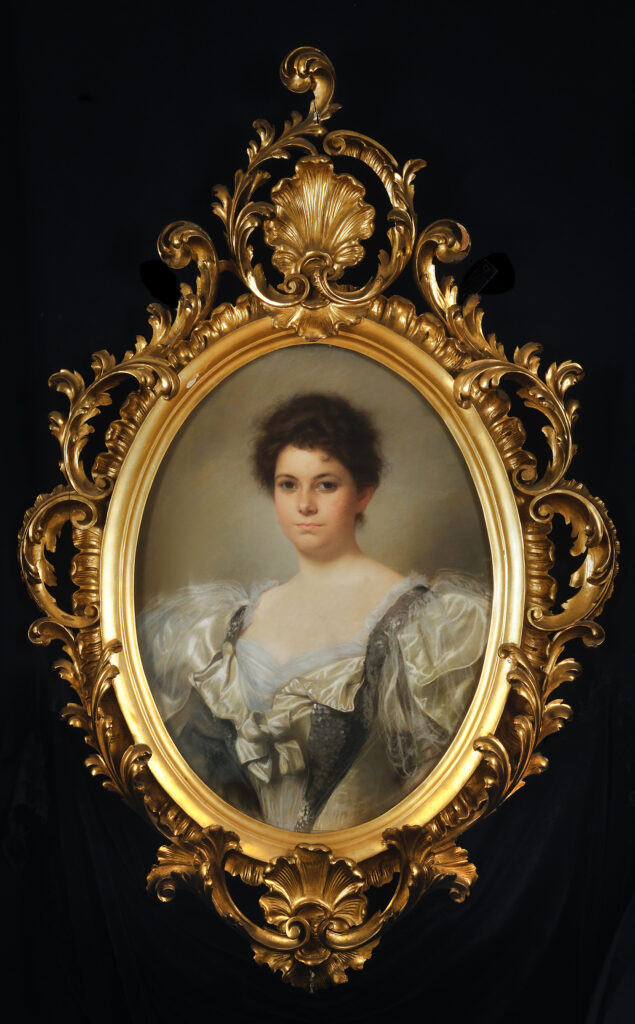
Christian M. Ross (1843-1904)
1896
Larz Anderson Auto Museum, Brookline, Mass.
Isabel Anderson, born Isabel Weld Perkins in Boston in 1876, was descended from prominent families with strong ties to America’s founding generations. Her privileged upbringing included a grand tour through Western Europe, during which this pastel portrait was painted in Rome.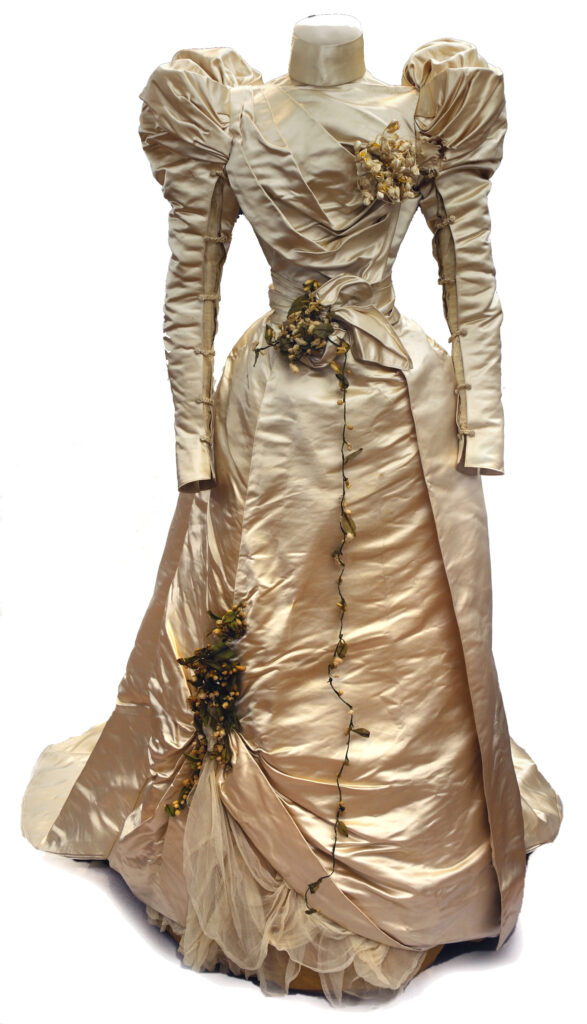
House of Worth, Paris
1897
Larz Anderson Auto Museum, Brookline, Mass.
Isabel married Larz Anderson, a young American diplomat, in June 1897. She wore this fashionable silk Duchesse satin dress—one of two Worth dresses she ordered for her wedding day—to the reception at her parents’ townhouse in Boston’s Back Bay.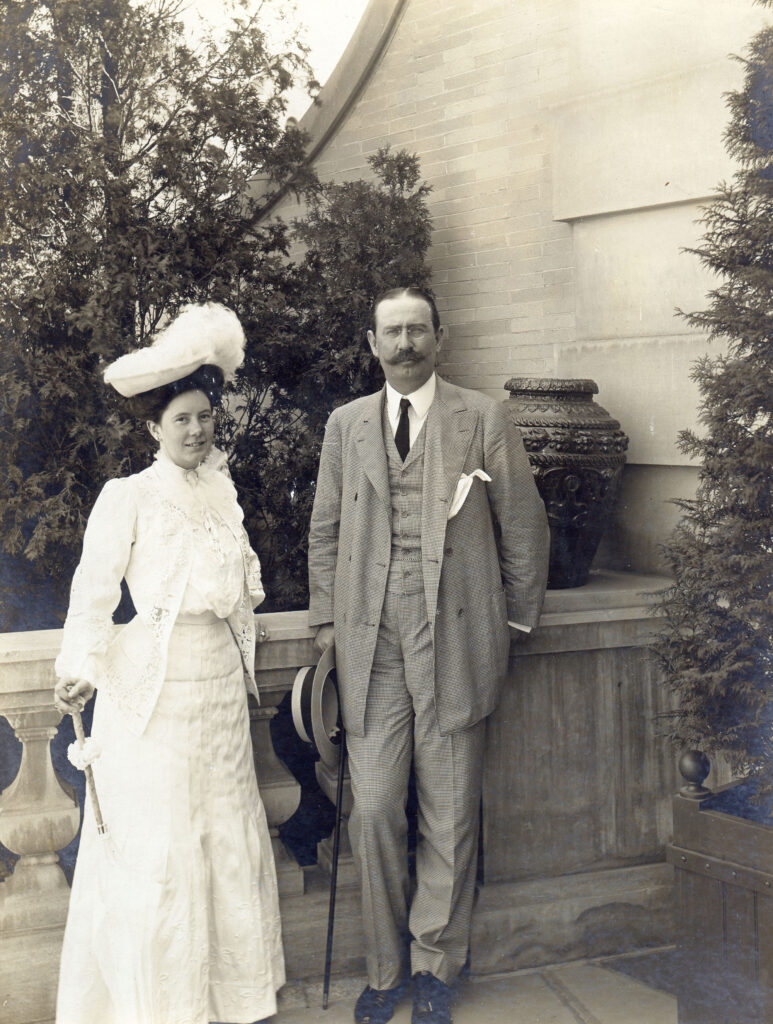
Henry F. Withey
1905
The Society of the Cincinnati Collections
During the winter social season, Isabel and Larz Anderson lived in the Dupont Circle neighborhood of Washington, D.C. This photograph of the couple standing on the west terrace in the garden at Anderson House was taken on May 29, 1905—two months after the house was completed.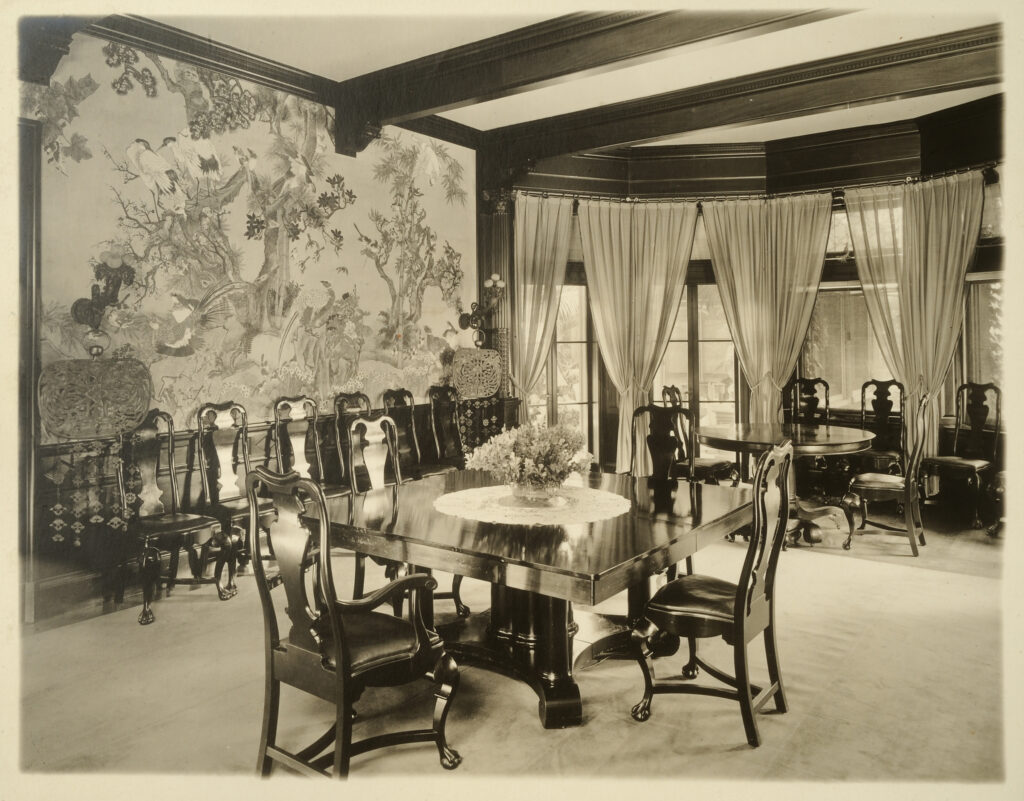
Thomas E. Marr
1905
The Society of the Cincinnati, Gift of Isabel Anderson, 1938
In the spring and fall, the Andersons lived at Weld, their sprawling estate in Brookline, Massachusetts. The sixty-four-acre property boasted an Italianate residence, carriage house, formal gardens, sporting fields, an outdoor theater, greenhouses, and guest and staff residences.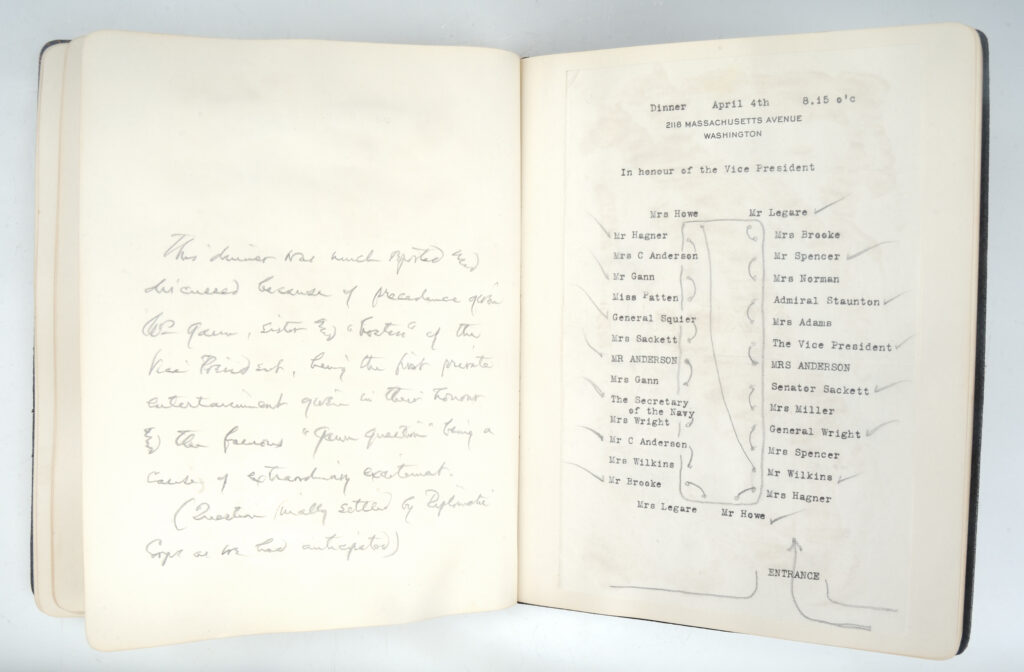
1915-1929
The Society of the Cincinnati, Gift of Isabel Anderson, 1938
Isabel Anderson orchestrated all aspects of social entertaining at her Washington home, which ranged from formal dinners, receptions, and luncheons to musical performances, garden parties, and after-theater gatherings. She and the household staff kept this book to record seating plans and noteworthy details of each dinner held at Anderson House. On April 4, 1929, the Andersons hosted a dinner in honor of Vice President Charles Curtis in the Dining Room.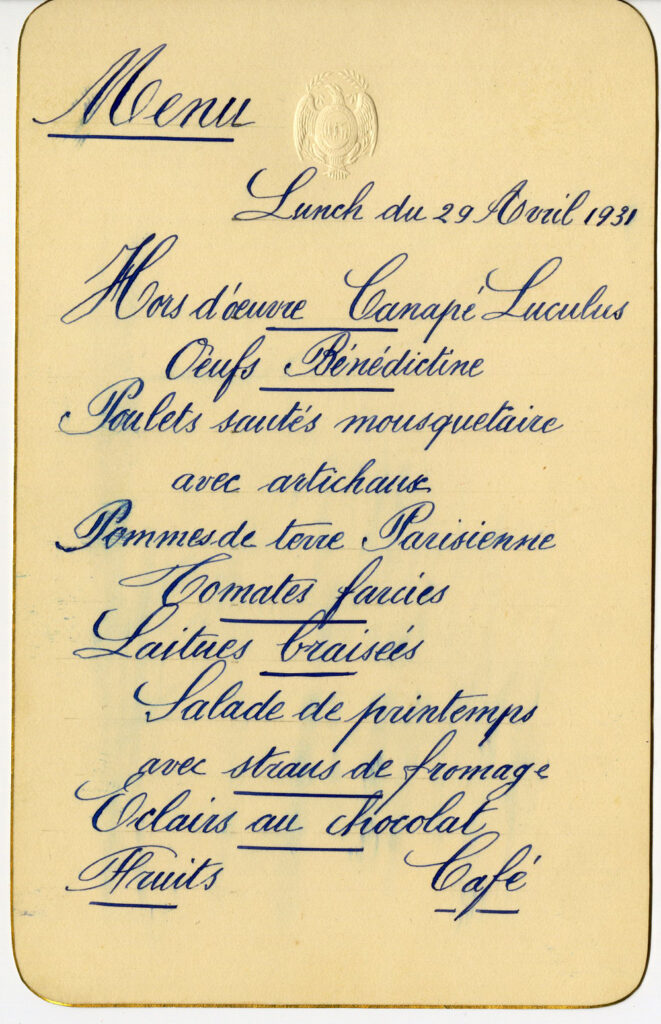
April 29, 1931
The Society of the Cincinnati, Gift of Isabel Anderson, 1938
In Spring 1931, the Andersons lent their Washington house to the federal government for the use of the king and queen of Siam (now Thailand) during their official visit to the United States. The Andersons hired a professional chef to work with their cook in preparing meals like this seven-course lunch.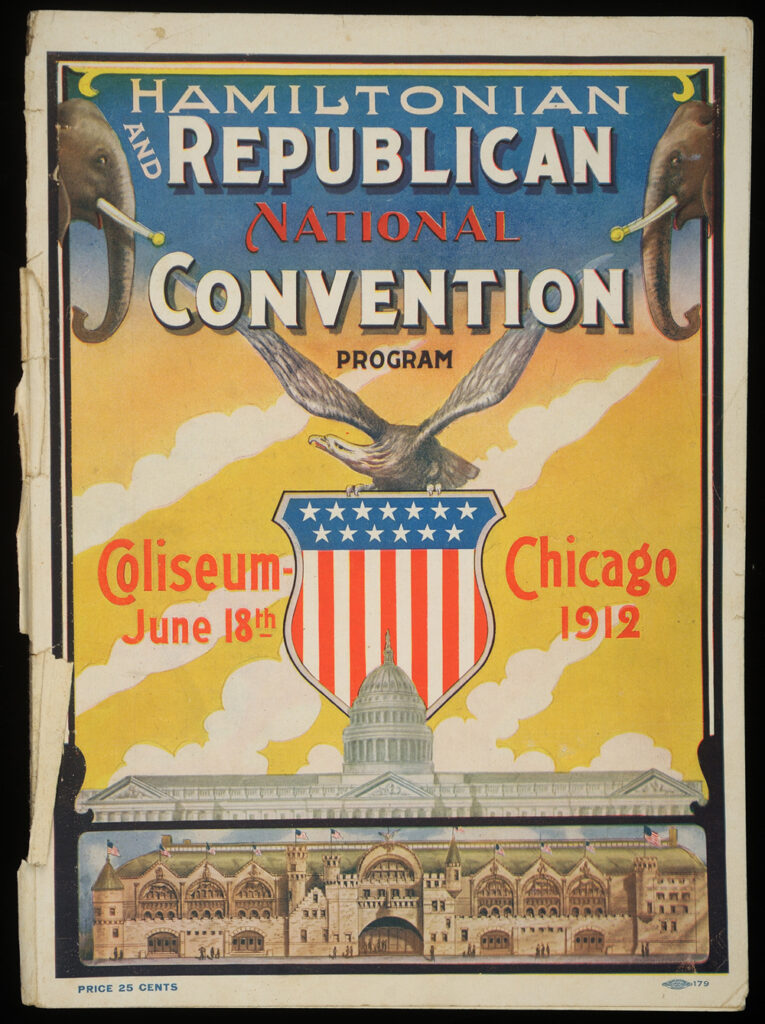
1912
The Society of the Cincinnati, Gift of the family of Alice Churchill Meeks, 2012
The contentious presidential campaign in 1912 spurred Isabel to become involved in politics. She attended the Republican National Convention in Chicago and joined the party’s Committee on Women’s Work to campaign for William H. Taft, who ultimately lost to Woodrow Wilson.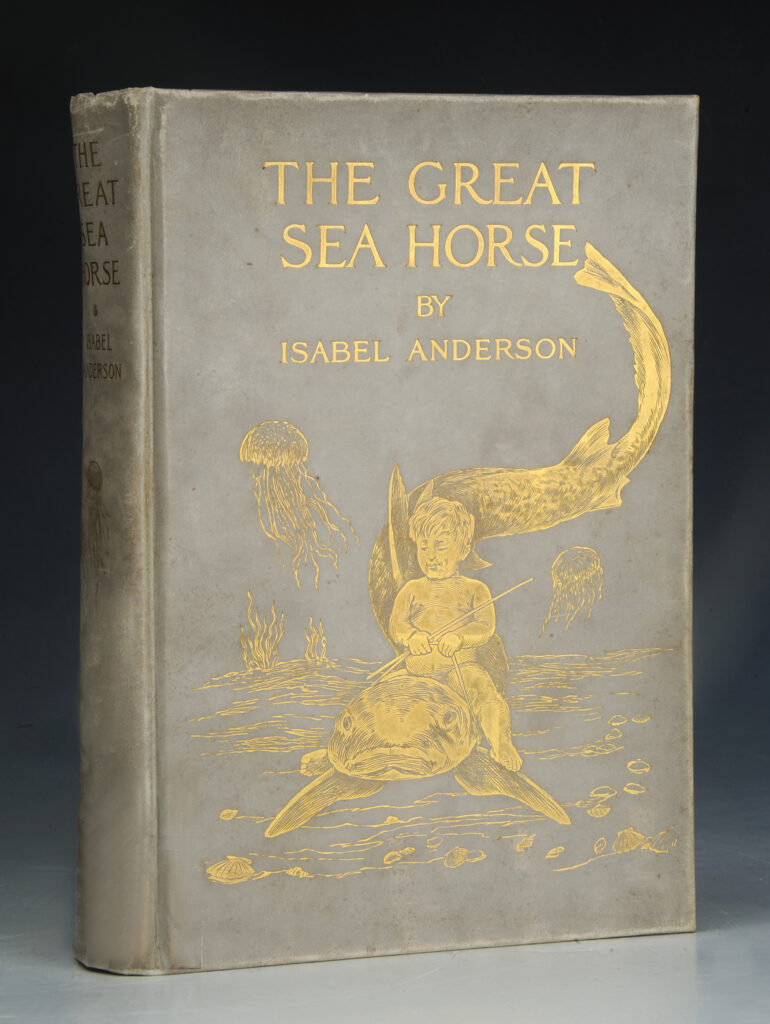
Isabel Anderson
Boston: Little, Brown and Company, 1909
The Society of the Cincinnati, Gift of Anne Wallingford Perin, 1975
Isabel Anderson wrote nearly fifty books ranging from children’s literature, drama, and poetry to travelogues and family history. Her first book, The Great Sea Horse, was a compilation of fantastical tales for children.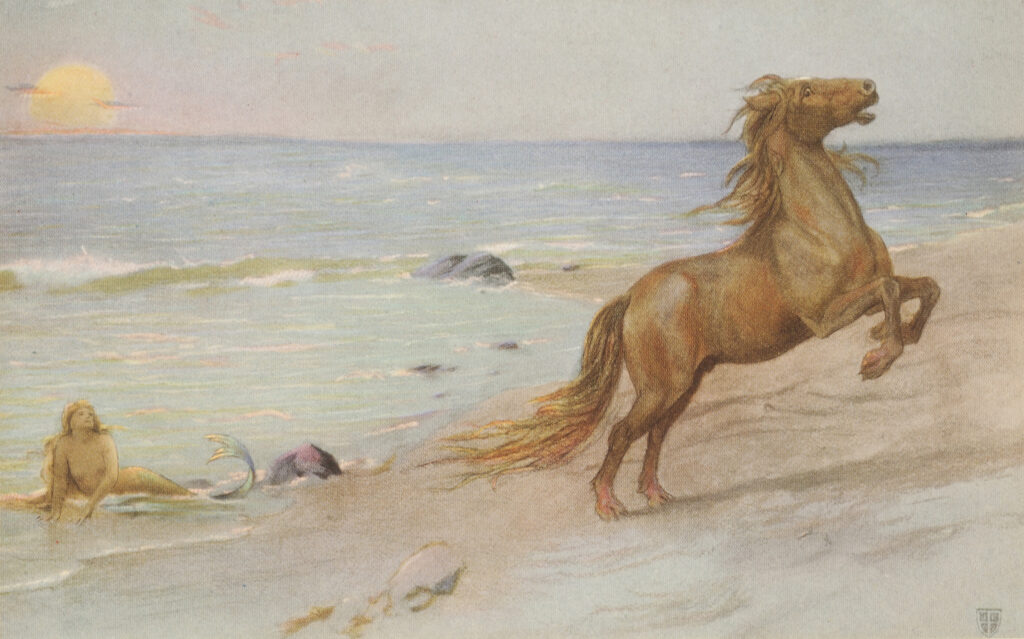
John Elliott (1858-1925)
1909
The Society of the Cincinnati, Gift of Anne Wallingford Perin, 1975
Isabel Anderson was a generous benefactor to John Elliott and commissioned him to draw illustrations for The Great Seal Horse. The whimsical illustrations, with their vibrant pastel colors, show the influence of Maxfield Parrish, with whom Elliott worked at the Cornish Art Colony.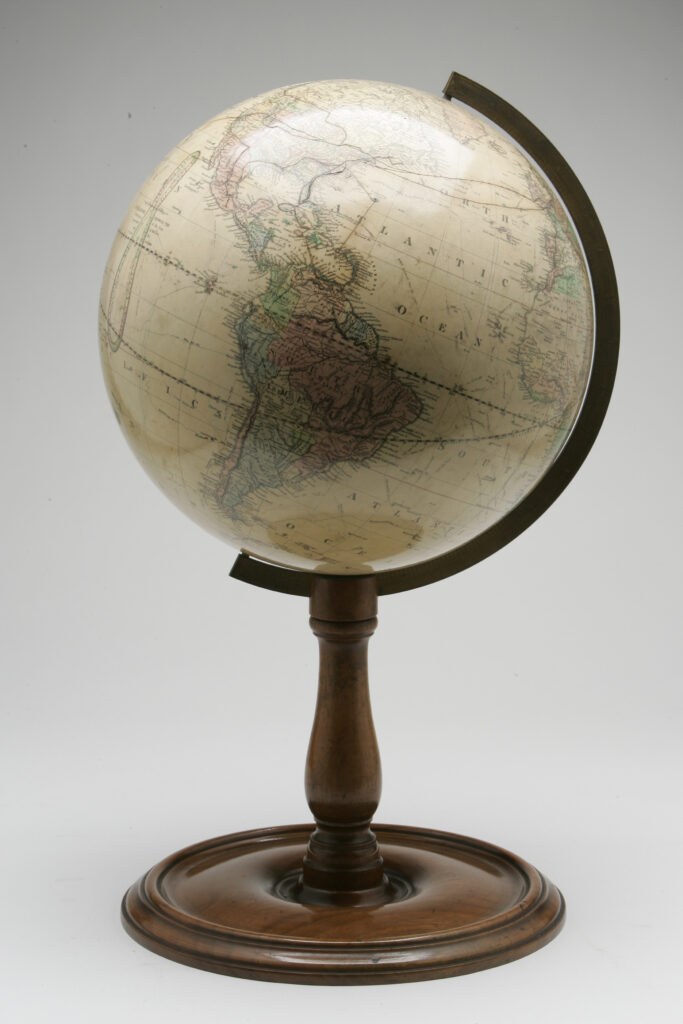
Gilman Joslin, Boston
1890s
The Society of the Cincinnati, Gift of Isabel Anderson, 1938
Isabel and Larz Anderson were world travelers of remarkable importance. They traveled through five continents—from the comfortable bounds of North America and Western Europe to more exotic destinations in Asia, Africa, and the Middle East—and etched the paths of some of their journeys on their globe.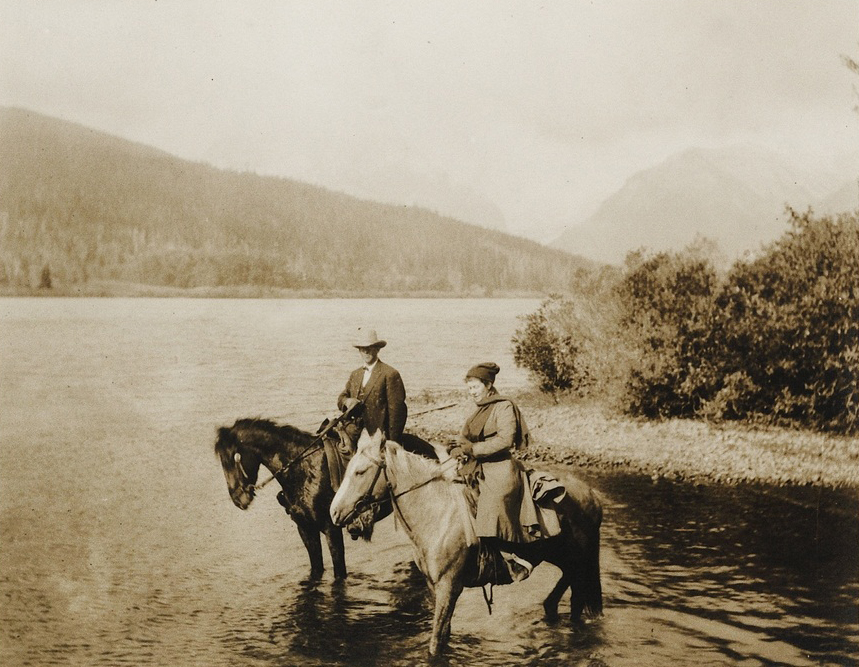
1915
The Society of the Cincinnati, Gift of Larz K. Anderson and Mary Lou Anderson, 2004
The Andersons explored the United States with as much vigor and curiosity as they did the rest of the world. Their domestic trips often included horseback riding, camping, and fishing—including on their 1915 visit to Glacier National Park in Montana. This photograph of the couple is preserved in the volume “Some Scraps – Private car ‘Federal’ … In 1915” of Larz Anderson’s journals.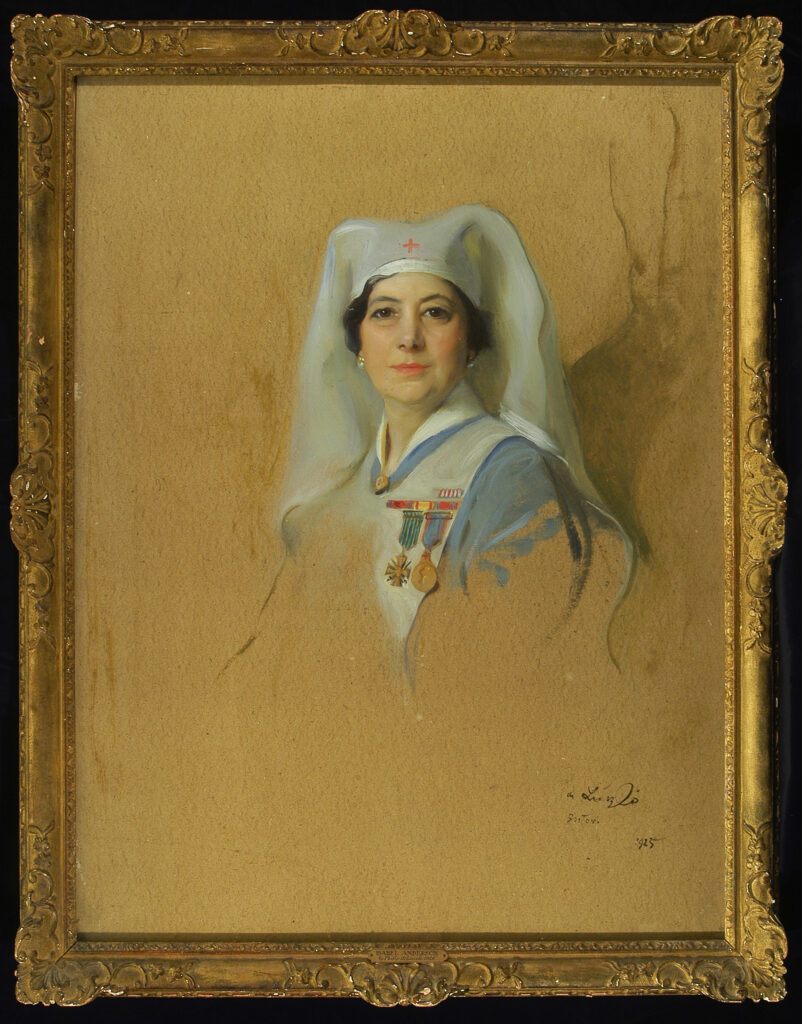
Philip de László (1869-1937)
1925
Larz Anderson Auto Museum, Brookline, Mass.
During World War I, Isabel Anderson answered the American Red Cross’s call for volunteers to serve on the western front. She spent eight months serving in canteens and military hospitals in France and Belgium, wearing uniforms like the one in this oil portrait.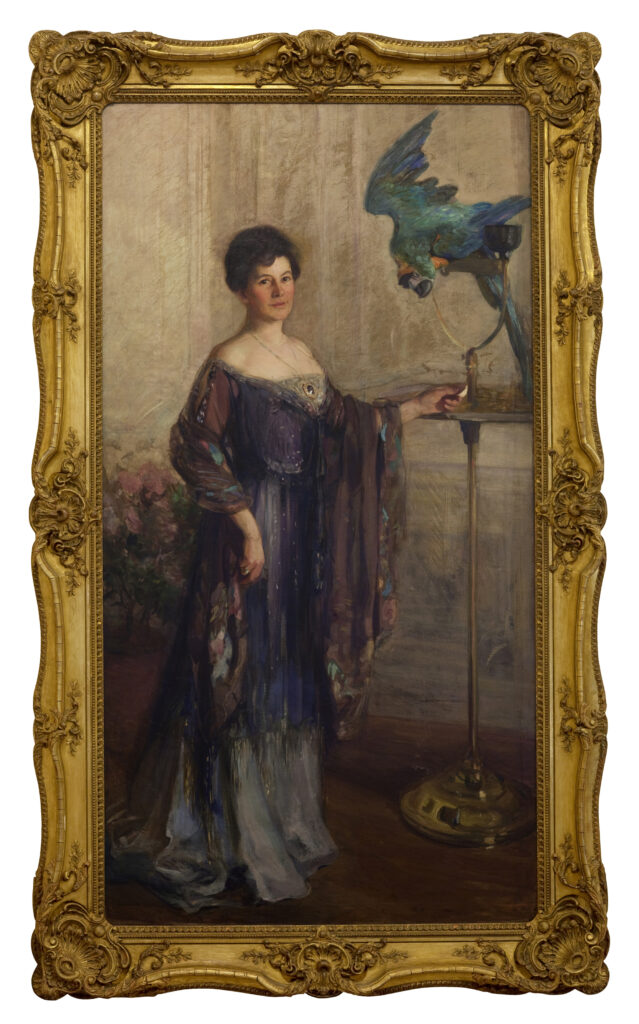
Attributed to DeWitt M. Lockman (1870-1957)
ca. 1915-1920
New Hampshire Historical Society
In the late 1910s, DeWitt M. Lockman captured a mature and confident Isabel Anderson in this oil portrait, painted when she was about forty years old. She wears a fashionable tea dress and large sapphire pendant and shares the composition with her pet parrot, Anna.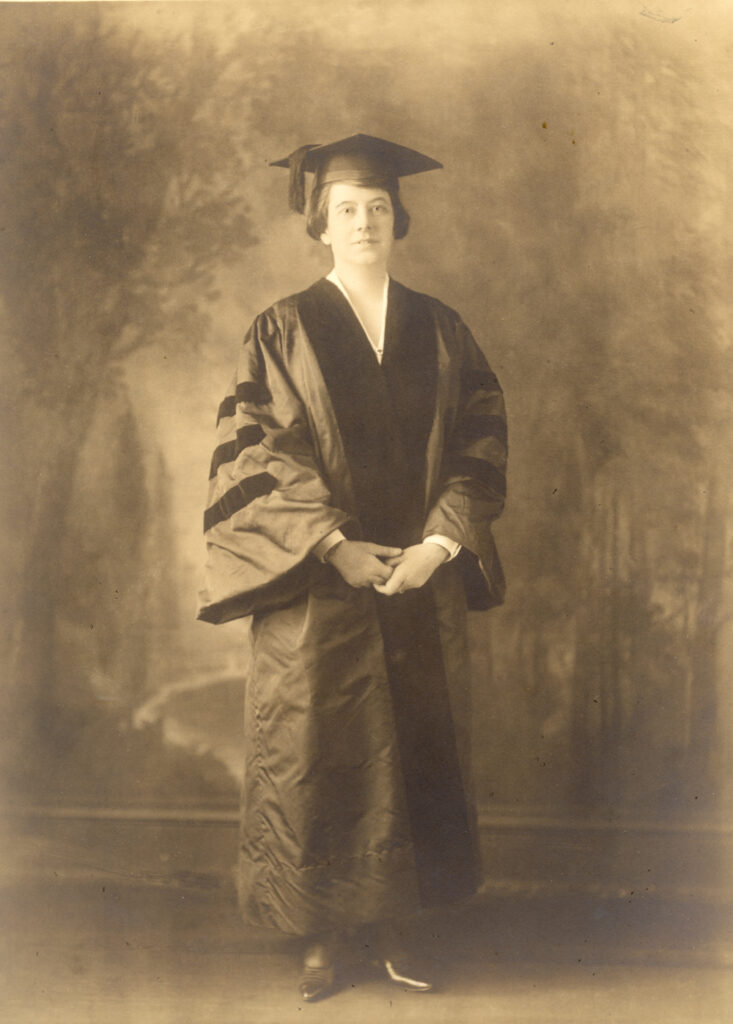
William H. Towles
1918
The Society of the Cincinnati, Gift of Herbert H. Wright, 1992
In recognition of her contributions and achievements, Isabel Anderson received honorary doctorates from the George Washington University in 1918—the first woman so honored by the school—and Boston University in 1930. Following the George Washington University ceremony, she posed for this photograph, wearing her academic regalia, in the Washington, D.C., studio of photographer William H. Towles.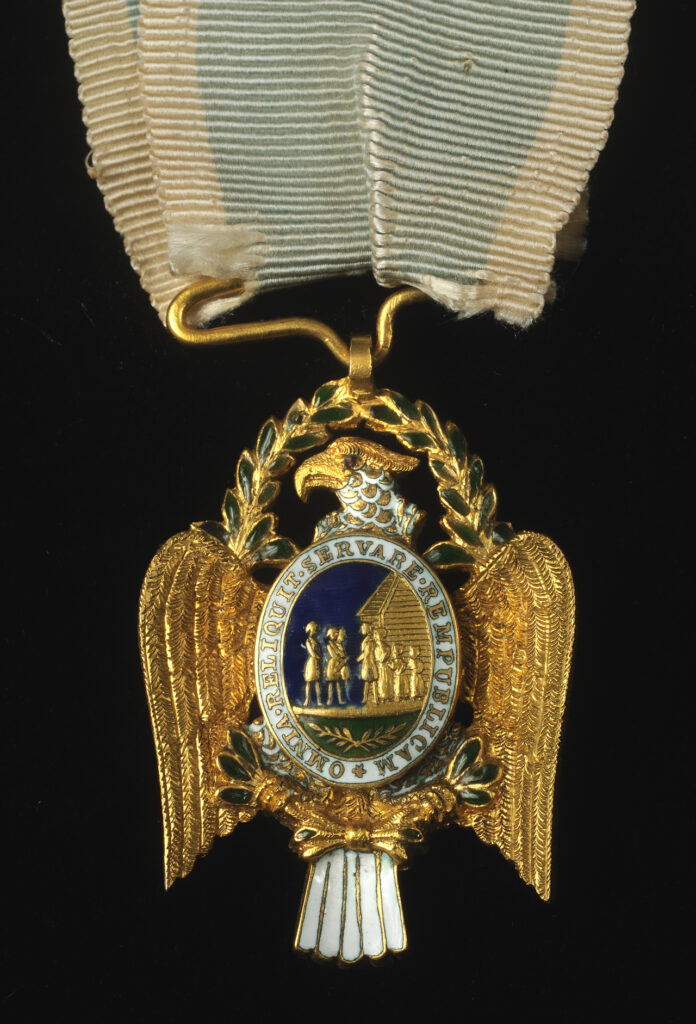
Tiffany & Co., New York
ca. 1910
The Society of the Cincinnati, Gift of Isabel Anderson, 1938
After Isabel Anderson donated her Washington mansion to the Society of the Cincinnati in 1938, the organization expressed its appreciation by making her an honorary associate with the right of wearing her late husband’s gold Eagle insignia—the only woman ever granted that privilege.